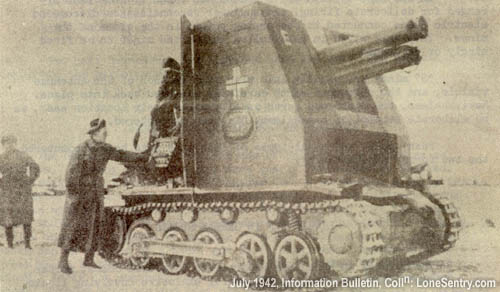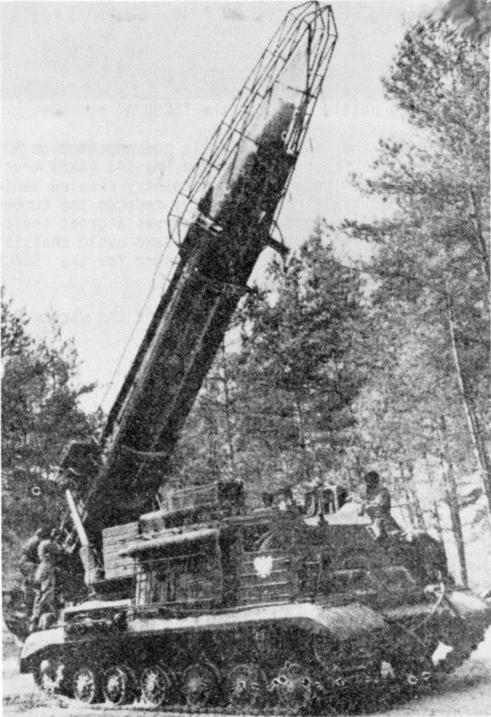
MBT 2000, or Al-Khalid, is the newest main battle tank (MBT) of the Pakistan Army. It is the result of a joint venture between Pakistan (Heavy Industries Taxila), China and Ukraine (KMDB and Malyshev Factory). The project director of this project was Brigadier (now Major General) Mohammad Asaad . The tank is a licensed production of the Chinese Type 90-IIM MBT. Ukraine provided the 1,200-hp model 6TD diesel engine, designed for desert and hot climates, allowing it to withstand extremes of temperature. Pakistan plans to induct 600 of these by 2007.
The tank has night-fighting capability as well as the ability to automatically track targets. It is a smaller tank than many of its contemporaries, thanks to the use of a mechanical autoloader to replace one crewmember. More than USD $20 million have been spent over almost ten years on the development and manufacture of MBT 2000.
In the 1970s, China's PLA leadership was concerned about the Soviet threat, and requested an improved main battle tanks (MBT) to replace the Type 59 and Type 69 MBTs. Beijing 201 Institute (China North Vehicle Research Institute) and Inner Mongolia 617 Factory (Inner Mongolia First Machine Group Corporation) were tasked to build the Type 90-II MBT. It underwent several development stages before being deemed satisfactory by the Pakistani military.
* The first prototype, built in the early 1990s, had a T-72-style chassis, a Chinese 125 mm gun and autoloader driven by a Chinese Fire Control System. The engine was a Chinese license built German MTU-396 diesel.
* The second prototype had a western digital Fire Control System and was powered by a Perkins 1200hp Condor diesel engine(from the Challenger 1 tank) coupled to a French ESM-500 automatic transmission(from the Leclerc). This version was considered too expensive and insufficiently performant in southern Pakistan's hot climate.
* The third protoype was similar to the second, but was powered by a Ukrainian 6TD-2 1,200 hp diesel engine (used in the T-84). This later became the Al-Khalid.
* The fourth prototype was envisaged as an export product, with a 1200hp German MTU-871/TCM AVDS-1790 diesel engine and an LSG-3000 transmission. Development of this version was cancelled due to the arms embargo imposed on Pakistan after the 1998 Pakistani nuclear tests.
The first prototypes of the the Type 90-II did not meet the PLA's requirements, and were further developed into the Type-98/Type-99 instead. Type 90-II did however influence the Type 96 which was later adopted by People's Liberation Army.
Norinco debuted the Type-90-IIM during the 2001 Abu Dhabi Defense Expo, under the export name MBT-2000. The Type-90-IIM is armed with a fully-stabilized 125mm smoothbore gun with autoloader. The gun is also capable of firing Russian-made 9M119 Refleks ATGM (AT-11 Sniper), which is produced in China under licence. The Type-90-IIM is also equipped with 7.62mm co-axial machinegun, 12.7mm air defense machinegun, roof-mounted stabilized sights with image intensification, laser rangefinder, auto tracker, and computerized fire-control system.
Currently, the only customer of the Type-90-IIM is Pakistan, which produces the tank under license as the Al-Khalid. Ukraine is a key partner in providing the 6TD-2 1,200-hp engine (as well as in upgrading Pakistan's older Type 59 tanks to the Al-Zarar configuration).
In March 2006, Jane's Defence Weekly reported that Saudi Arabia was planning to evaluate the Al-Khalid in April 2006. Pakistani defense officials said the Saudi government may be interested in purchasing up to 150 Al-Khalid for $600 million USD.
he Al-Khalid is designed with a 125mm (48 caliber) smoothbore, auto-frettaged and chrome-plated gun which can fire APFSDS, HEAT-FS and HE-FS conventional ammunition and missiles. It is equipped with a muzzle reference system and dual-axis stabilization. Elevation and azimuth control is achieved by electro-hydraulic power drives. The tank is also equipped with a 7.62mm-coaxial machine gun, a 12.7mm externally-mounted machine gun that can be fired with the hatch closed, and smoke grenade launchers.
The automatic ammunition-handling system for the main gun has a 24-round ready-to-fire magazine and can load and fire at a rate of eight rounds per minute.
The gunner is provided with a dual magnification day sight and the commander with a panoramic sight for all-around independent surveillance. Both sights are dual-axis image stabilized and have independent laser range finders. The commander has the ability to acquire a target independently while the gunner is engaging another one. The automatic target-tracking system is designed to work when tank and target are both moving. Night vision for the gunner and commander is achieved through a dual-magnification thermal imaging sight. Both sites are integrated with the fire-control system.
The Norinco fire-control system has inputs from ten sensors. The ballistic computation time is less than one second. The manufacturer claims routine first round hits on standard 8 ft × 8 ft targets at ranges over 2,000 meters.
* Effective range: 200 m to 5,000 m
* Sensor: laser ranging from 200 m to 9,990 m
* Auto-tracking, firing four types of munitions, gunner's thermal imaging sight, commander's image intensification night vision sight, gyro-stabilized and UPS power supply system.
The MBT 2000 has a 1,200-horsepower supercharged diesel engine and semi-automatic transmission. An under-armour auxiliary power unit allows electrical systems to operate with the main engine switched off. The suspension consists of torsion bars, hydraulic dampers and buffers.
MBT 2000, based on its Chinese and Soviet design ancestry, is considerably smaller and has a lower silhouette than most western tanks. At 46 tonnes, it is easier to transport than a nearly 70-tonne M1 Abrams. Its high power-to-weight of 26 hp/tonne gives it a maximum speed of 70 km/h and acceleration from 0 to 30 km/h in under ten seconds.
The snorkel system allows it to cross prepared water obstacles up to 5 meters deep. Navigation is assisted by the use of Global Positioning and Inertial Navigation Systems.
The Al-Khalid has modular composite armour and explosive reactive armour, nuclear-biological-chemical defences, an effective thermal smoke generator, internal fire extinguisher and explosion-suppression system.












Note